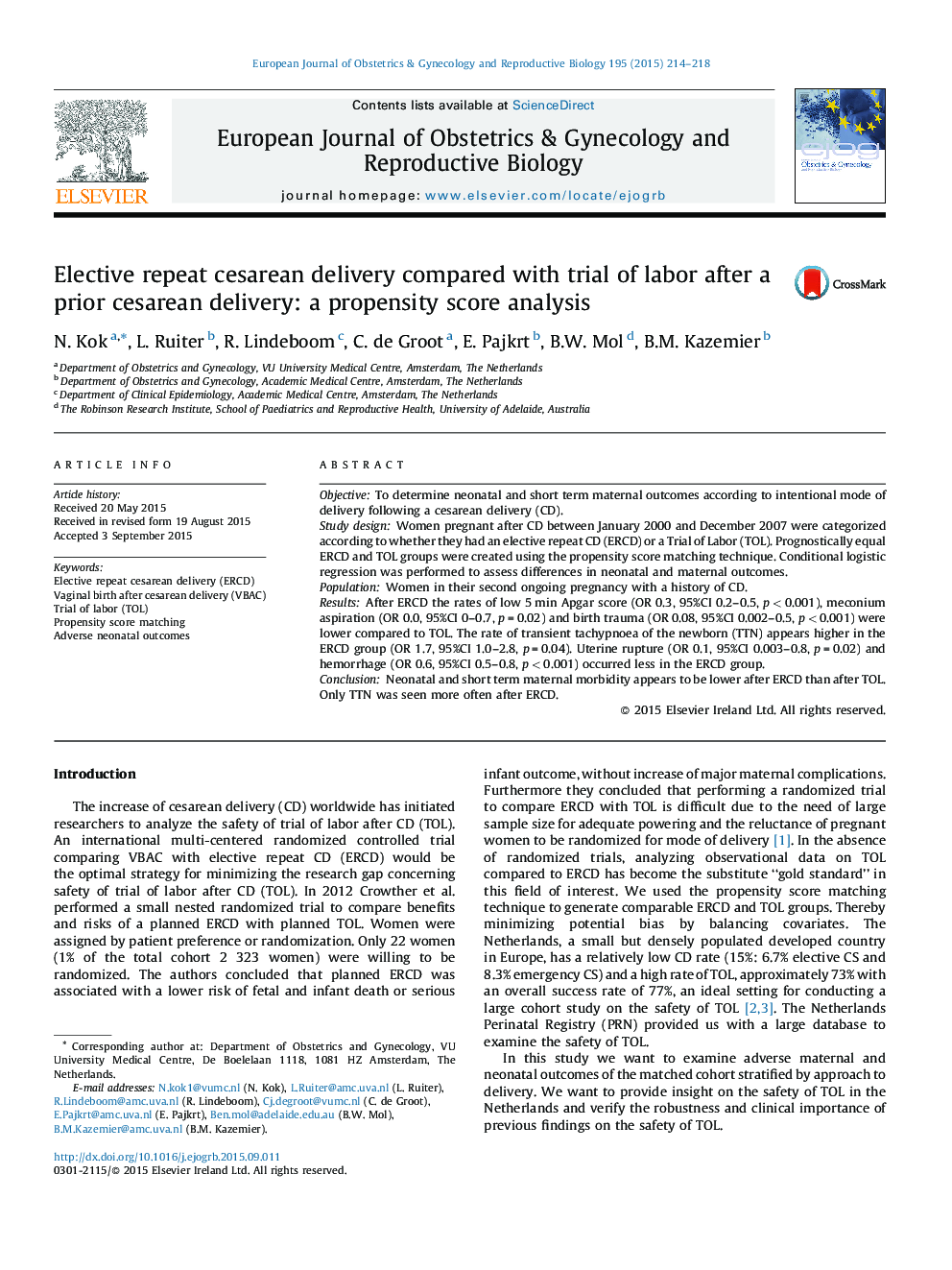| Article ID | Journal | Published Year | Pages | File Type |
|---|---|---|---|---|
| 3919581 | European Journal of Obstetrics & Gynecology and Reproductive Biology | 2015 | 5 Pages |
ObjectiveTo determine neonatal and short term maternal outcomes according to intentional mode of delivery following a cesarean delivery (CD).Study designWomen pregnant after CD between January 2000 and December 2007 were categorized according to whether they had an elective repeat CD (ERCD) or a Trial of Labor (TOL). Prognostically equal ERCD and TOL groups were created using the propensity score matching technique. Conditional logistic regression was performed to assess differences in neonatal and maternal outcomes.PopulationWomen in their second ongoing pregnancy with a history of CD.ResultsAfter ERCD the rates of low 5 min Apgar score (OR 0.3, 95%CI 0.2–0.5, p < 0.001), meconium aspiration (OR 0.0, 95%CI 0–0.7, p = 0.02) and birth trauma (OR 0.08, 95%CI 0.002–0.5, p < 0.001) were lower compared to TOL. The rate of transient tachypnoea of the newborn (TTN) appears higher in the ERCD group (OR 1.7, 95%CI 1.0–2.8, p = 0.04). Uterine rupture (OR 0.1, 95%CI 0.003–0.8, p = 0.02) and hemorrhage (OR 0.6, 95%CI 0.5–0.8, p < 0.001) occurred less in the ERCD group.ConclusionNeonatal and short term maternal morbidity appears to be lower after ERCD than after TOL. Only TTN was seen more often after ERCD.
